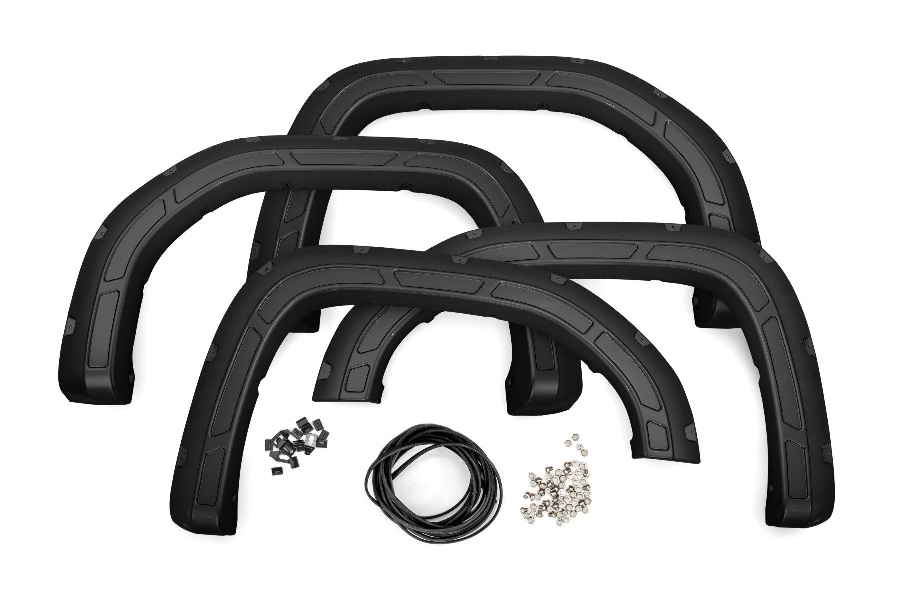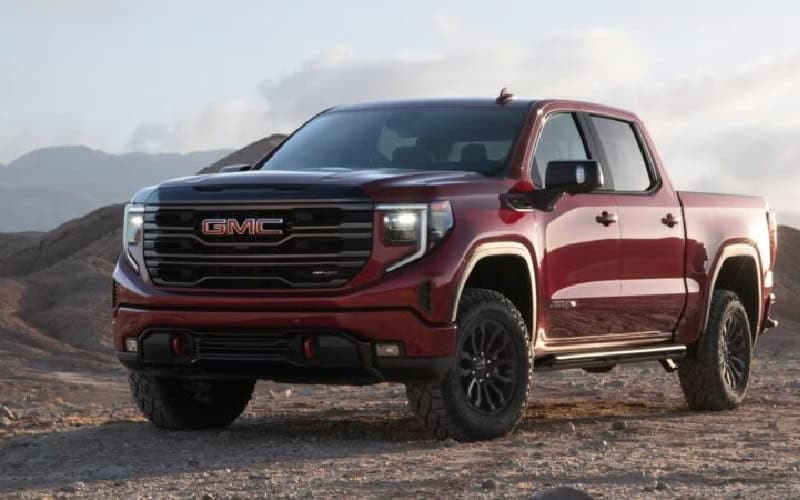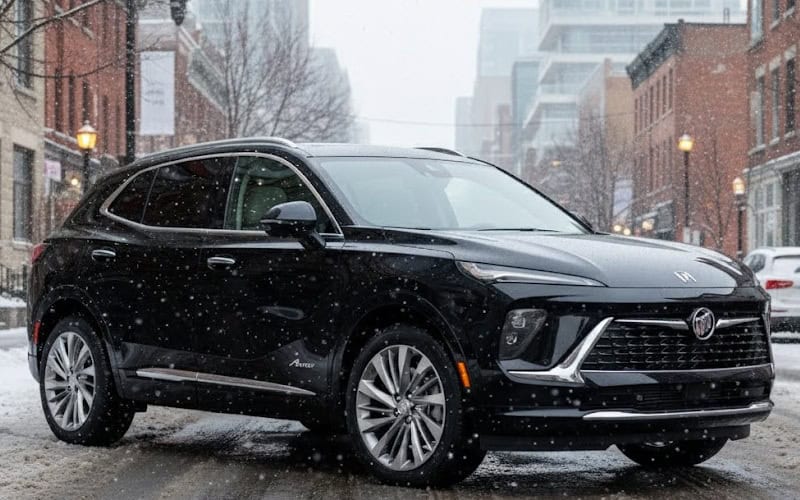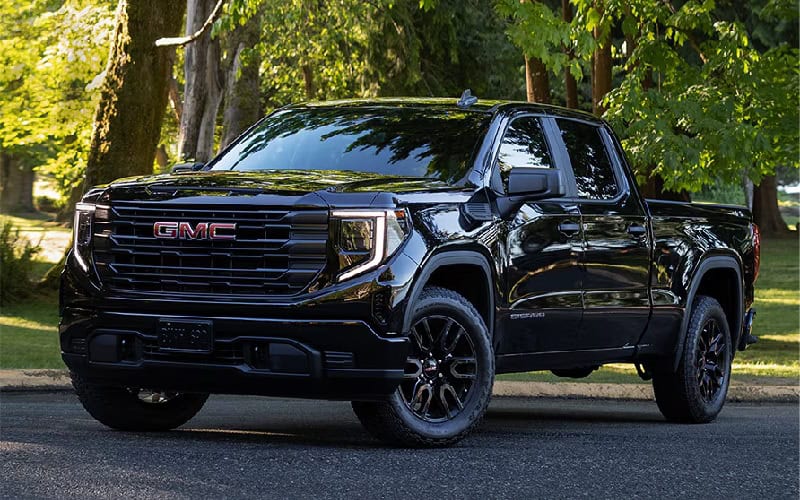2025 GMC Sierra 1500 Fender Flares: Style and Protection
Why Are Fender Flares Becoming Essential for Sierra Owners? The GMC Sierra 1500 continues its legacy as a versatile and capable pickup truck, boasting bold styling and impressive capabilities. While the factory design projects strength and confidence, many Sierra owners are turning to aftermarket fender flares to enhance both aesthetics and functionality. These exterior accessories […]
Why Are Fender Flares Becoming Essential for Sierra Owners?
The GMC Sierra 1500 continues its legacy as a versatile and capable pickup truck, boasting bold styling and impressive capabilities. While the factory design projects strength and confidence, many Sierra owners are turning to aftermarket fender flares to enhance both aesthetics and functionality. These exterior accessories have evolved from purely practical add-ons to sophisticated styling elements that complement the muscular Sierra design language while providing valuable protection for the vehicle and other road users.

Factory Fender Flare Options for 2025
The GMC Sierra 1500 lineup offers several factory fender flares, depending on the trim level. The base Pro and SLE trims feature body-coloured wheel openings with subtle flares. Moving up to the Elevation trim introduces subtle, integrated fender flares that flow seamlessly with the body lines, providing minimal wheel coverage.
The AT4 and AT4X off-road focused trims feature more pronounced factory flares, extending approximately 25 mm from the body to accommodate the wider stance and larger tire packages. These factory flares use a textured matte black finish that resists scratches and complements the models’ rugged aesthetic.
At the premium end, the Denali and Denali Ultimate trims feature body-coloured fender flares with chrome accents, presenting a more refined appearance while maintaining sufficient wheel coverage for their 20-inch and 22-inch wheel options.
Aftermarket Fender Flare Styles
For Sierra owners looking to personalize their trucks beyond factory options, the latest model accommodates several aftermarket fender flare styles:
Pocket Style Flares: These feature visible fasteners (often decorative bolt heads) that create a rugged, bolted-on appearance. They typically extend 45-65 mm from the body, providing substantial coverage for wider tires or custom wheel setups. The textured black finish contrasts dramatically with light-colored Sierra paint options.
Street Style Flares: Offering a more streamlined appearance, these flares extend approximately 25-35 mm from the body with smooth contours that complement the Sierra design lines. Many can be painted to match the vehicle’s body colour for a factory-plus appearance.
Extend-A-Fender: These provide maximum coverage, extending 75-90 mm from the body. They’re ideal for Sierra owners who have installed significantly wider tires or wheel spacers and need additional coverage to comply with regulations regarding tire coverage.
OE Style: These closely mimic the appearance of the factory flares found on higher trims but may offer more coverage. They’re popular with owners of base trims who want the appearance of the AT4 or Denali models without upgrading the entire vehicle.
Material and Construction Considerations
The Sierra fender flare options utilize several different materials, each with distinct advantages:
Thermoplastic Olefin (TPO): Many factory and premium aftermarket flares use this flexible yet durable material. TPO offers excellent UV resistance, preventing fading or brittleness even after years of exposure. It also maintains flexibility in cold weather, which is particularly important for northern regions where temperatures can reach -30°C or lower.
Acrylonitrile Butadiene Styrene (ABS): This rigid plastic provides excellent dimensional stability and impact resistance. ABS flares typically feature a textured matte finish that hides minor scratches and complements the work-ready Sierra image.
DuraFlex: A proprietary blend used by some manufacturers, combining the flexibility of TPO with enhanced impact resistance. These premium options typically come with warranties against cracking or breaking, even in extreme temperature conditions.
Most quality flares designed for the Sierra include marine-grade stainless steel mounting hardware to prevent corrosion, which is particularly important in regions where they use road salt during the winter months.
Installation Considerations
Installation complexity varies by fender flare style and manufacturer. Many pocket-style flares require drilling into the factory wheel wells, making installation a permanent modification. In contrast, some OE-style and street-style options utilize existing factory mounting points and edge trim to secure the flares without permanent modifications.
For the Sierra specifically, installation must account for the various sensors and cameras positioned around the vehicle. Elevation trims and above feature front wheel well-mounted sensors that must remain unobstructed for proper function. Similarly, AT4 models equipped with the available surround-view camera system feature discreet lenses positioned near the wheel wells, which must maintain clear sightlines.
Professional installation typically requires 2-4 hours, depending on the style chosen. While most manufacturers provide detailed instructions for DIY installation, the precision required to ensure proper alignment and weatherproofing often justifies professional installation.
Five Facts About 2025 GMC Sierra 1500 Fender Flares
- The widest available fender flares for the Sierra provide sufficient additional coverage to legally fit tires up to 35 mm wider than the factory specifications without extending beyond the vehicle’s body lines.
- Factory AT4 fender flares feature a textured finish with microscopic ceramic particles that enhance scratch resistance by approximately 30% compared to standard textured plastics.
- Engineers tested aftermarket fender flares on the Sierra and found that well-designed flares can cut side spray in wet conditions by up to 40%, greatly improving visibility for nearby vehicles.
- Designers apply premium fender flares for the Sierra Denali Ultimate to a specialized 12-stage painting process, ensuring perfect colour matching and alignment of microscopic metallic flakes.
- Engineers tested the Sierra fender flare mounting systems in wind tunnels at speeds exceeding 160 km/h to confirm they maintain their structural integrity at highway speeds and in crosswinds.
Frequently Asked Questions
Do I need to remove the factory fender flares before installing aftermarket ones on my Sierra?
- Yes, all aftermarket fender flares replace the factory wheel well moldings or flares. The installation process typically begins with removing the original components, which are attached with a combination of plastic clips and adhesive, depending on the trim level.
Will installing wider fender flares affect my Sierra warranty?
- Installing aftermarket fender flares generally will not void your vehicle’s comprehensive warranty. However, if the installation requires modification to the body and later causes related issues, those specific problems might not be covered. It’s always advisable to use professional installation for drilling-required flares.
How do I match the paint colour for painted fender flares on my Sierra?
- For a perfect match, use the paint code located on your service parts identification sticker (typically found in the glove box or driver’s door jamb). Professional automotive paint shops can mix the exact colour using this code, ensuring seamless integration with your truck’s existing paint.
Can I install fender flares on a Chevrolet Silverado 1500 with factory running boards?
- Yes, fender flares are compatible with factory running boards on all models. However, some extended-width flares may create a slight aesthetic discontinuity with certain running board styles. Premium flare manufacturers offer complementary running board extensions to maintain a cohesive appearance.
How do fender flares affect aerodynamics and fuel efficiency?
- Properly designed fender flares have minimal impact on aerodynamics and fuel efficiency. Wind tunnel testing indicates that most OE-style and street-style flares increase drag by less than 2%, resulting in negligible changes to fuel economy of less than 0.2 L/100 km under normal driving conditions.
Are fender flares required by law when using wider tires?
- Regulations require that tires do not extend beyond the vehicle’s fenders. If you’ve installed wider tires or wheel spacers that cause the tires to extend beyond the factory wheel wells, fender flares are legally required to provide coverage. The specific requirements vary by region, but generally, the tire tread must be covered entirely from a top-down view.
How do I maintain and clean fender flares on my Sierra?
- For textured black flares, use a soft brush with mild soap and water, avoiding harsh chemicals that can degrade the plastic. For painted flares, treat them as you would your vehicle’s paint, using automotive-specific wash products. Apply UV protectant for automotive plastics every 3-4 months to prevent fading and deterioration.
Will fender flares fit a Sierra with factory mud flaps?
- Most fender flares are compatible with factory mud flaps, although some may require minor adjustments. Pocket-style and extend-a-fender styles may necessitate relocating the mud flaps slightly. Some manufacturers offer integrated mud flap solutions specifically designed to work with their fender flares for a cohesive appearance.
How do the fender flares for the Sierra differ from previous model years?
- This truck features slightly revised body lines compared to 2019-2024 models, particularly around the front wheel wells to accommodate the updated headlight design. While some previous-generation flares may physically attach, they won’t align precisely with the body contours. Always ensure you’re purchasing flares specifically designed for the latest model year.
Can fender flares be installed on a Sierra with side-exit exhaust systems?
- Yes, but careful consideration is required. Extended-width rear fender flares may interfere with certain side-exit exhaust configurations. Professional installers can modify the flares with heat shields or custom cutouts to accommodate these exhaust systems while maintaining the proper appearance and functionality.


